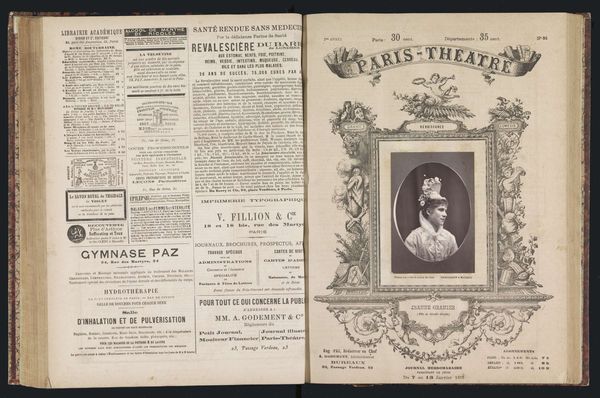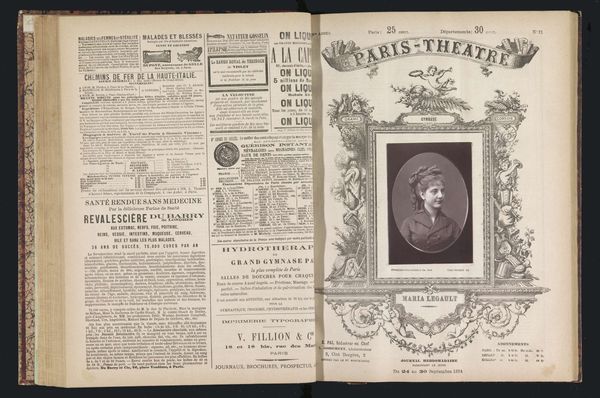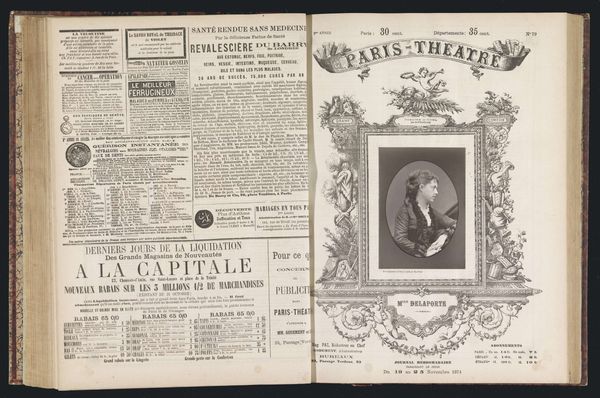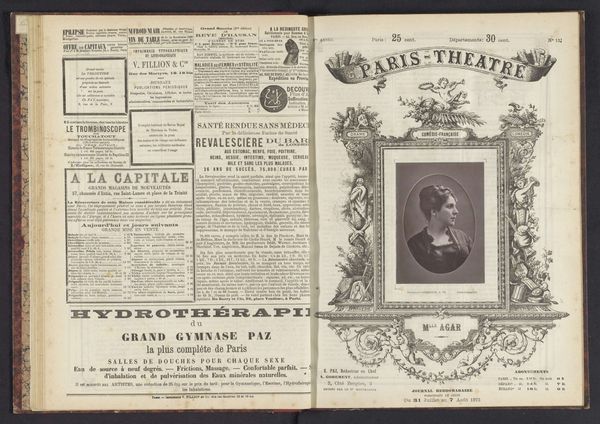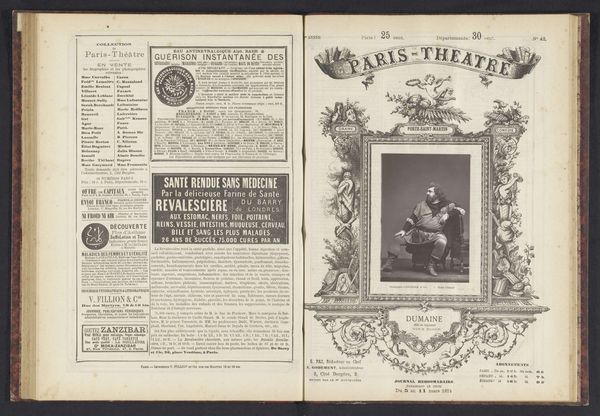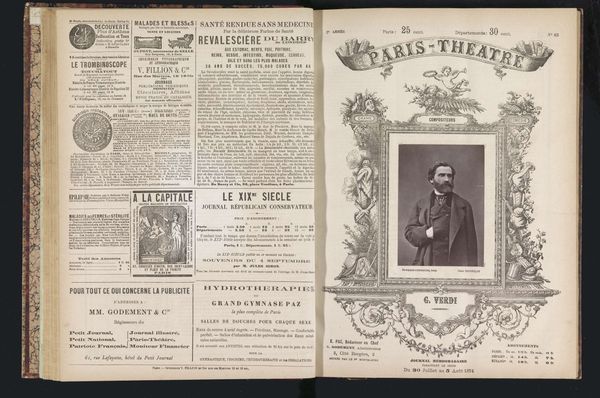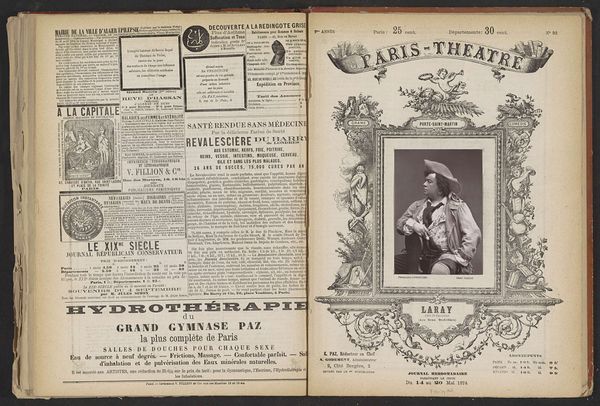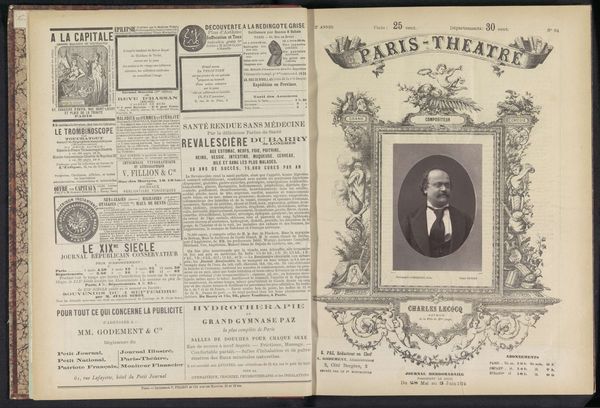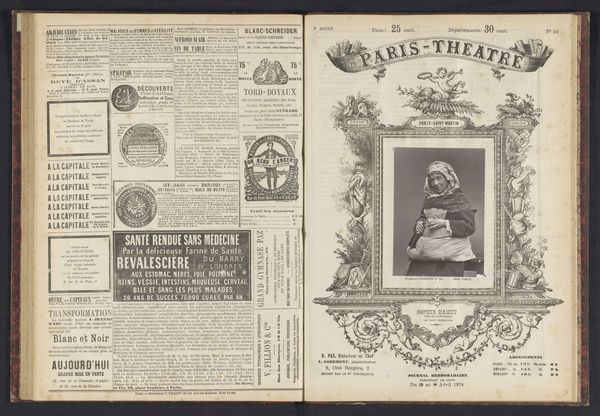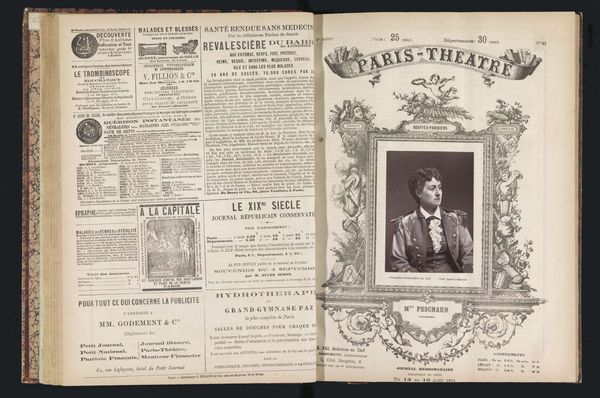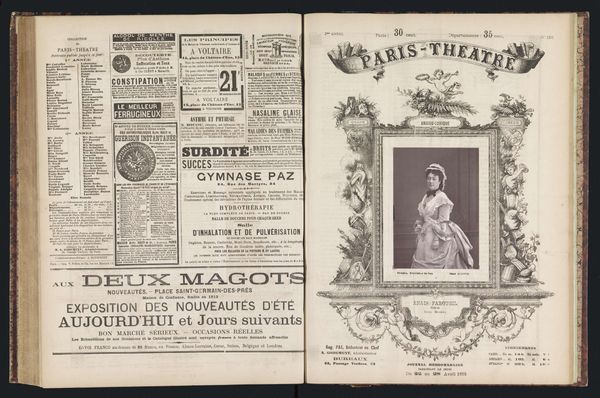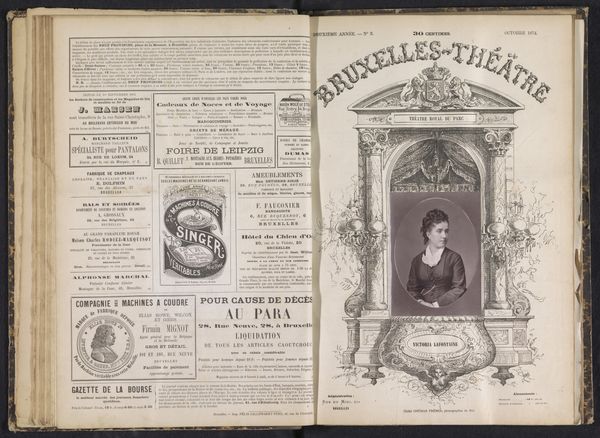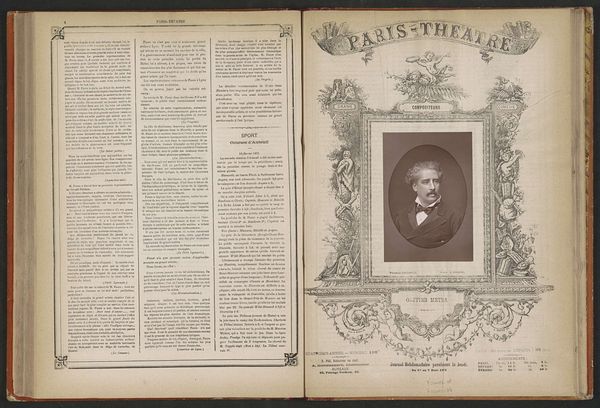
print, photography
#
portrait
# print
#
photography
#
cityscape
#
academic-art
Dimensions: height 123 mm, width 86 mm
Copyright: Rijks Museum: Open Domain
Editor: This is a photographic print entitled "Portret van José Dupuis in Schotse kledij," created before 1874, from the studio of Gaston et Mathieu. It is a magazine reproduction of a staged photo. The figure is set inside a theatrical border. The man himself, of course, stands out, in what looks like a very ornate, performative, rendition of Scottish garb. What strikes you about this image? Curator: Primarily, I am interested in the relationship between the photographic image itself and the highly decorative printed border. Note the contrast of tones, achieved through two very distinct modes of representation. Editor: That’s a great observation. It almost feels like two separate pieces melded together. The graphic nature of the printed border reminds me of theatre bills. Curator: Precisely. And how the graphic quality of the lettering becomes ornamentation. "Paris-Theatre" arched above, the word "Dupuis" centered below...these function structurally to anchor the photographic element. Consider how our reading of Dupuis shifts within this constructed space. It’s no longer simply a portrait; rather it suggests a role, a performance… Editor: Right, he’s presented as this figure in costume, performing a role… like a character on stage. The border creates a framework that really enhances that idea. Are you seeing other instances of structural significance here? Curator: Yes. Note how the costume, specifically the fall of fabric, introduces diagonal lines which mirror the sweeping botanical ornaments in the bottom half of the frame. Such mirroring produces visual cohesion in the totality of the image. Editor: This way of analyzing the structural components provides a lot of clarity on what's at play here. Thank you. Curator: My pleasure. This approach invites viewers to engage deeply with the image's design and material qualities, providing new layers to understand artistic representation.
Comments
No comments
Be the first to comment and join the conversation on the ultimate creative platform.
